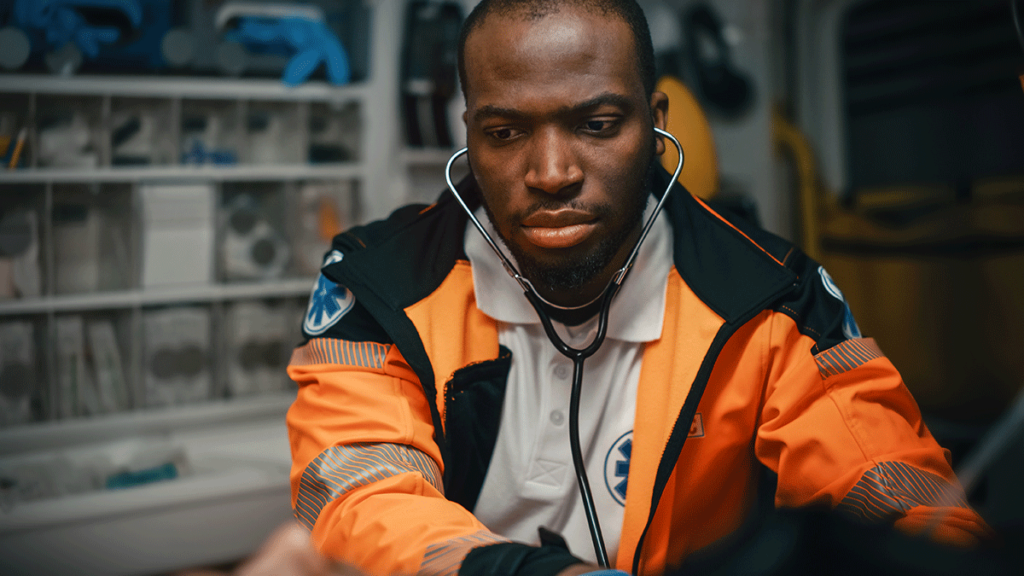In 2016, the Drug Enforcement Agency (DEA) issued a nationwide alert calling fentanyl—a potent opioid painkiller—a public health and safety threat. Now law enforcement and medical personnel in Washington State are following suit. The Snohomish County Sheriff’s Office has warned staff of the potential risk of secondhand exposure and overdose.
Fentanyl endangers first responders and people who use the drug—for medical or recreational purposes. Contact an addiction treatment provider like Northpoint Recovery at 888.296.8976 to learn more about the dangers of fentanyl near first responders and fentanyl addiction treatment options in Idaho.
What Makes Fentanyl Dangerous?
There are several reasons why fentanyl drug abuse is so dangerous for first responders, such as:
- Availability – Fentanyl is available in many forms, including patches, pills, liquids, powders, and tablets. It’s easier to purchase via the internet or on the streets.
- Potency – Fentanyl is much more potent than laboratory-grade heroin and 100 times more powerful than pure morphine. The difference between an average high and a deadly overdose can be a matter of nanograms.
- Respiratory depression – All opioids suppress breathing at higher doses, but fentanyl produces worsened and more prolonged respiratory depression than other opioids. Part of this is because of how the body absorbs fentanyl and because it produces less sedation—a significant warning sign of opioid overdose.
- Mislabeling – Many drug dealers are selling what they represent as pure heroin, but it has been cut—or even replaced—with fentanyl. Even pills can be counterfeited and presented as other opioids or medications—Xanax, for example.
- Ineffective antidotes – In the life-or-death situation presented when a person overdoses on fentanyl, every minute matters. Suppose emergency personnel think the drug taken was heroin. In that case, they will administer a shot of a life-saving anti-overdose drug such as naloxone that is of inadequate dosage to reverse the effects of fentanyl. Depending on the amount of fentanyl consumed, it can take double or even triple the average amount of naloxone to revive a person overdosing.
It’s even worse when the drug has been intentionally mislabeled because the emergency protocols differ. For example, a Xanax overdose does not call for a naloxone injection, which is critical in an opioid-related situation. This purposeful deception can be the difference between life and death.
Mike Bastinelli, a spokesman for the Yakima Police Department, says, “The first thing we want people to do is—unless you purchase a medication from a pharmacy, don’t mess with it. The problem we’re having is [that] this can be disguised as any other pill on the market, and that’s what makes it dangerous.”
How Are First Responders Protecting Themselves from Fentanyl?
Police officers already wear gloves, but in its liquid form, fentanyl can be absorbed elsewhere through the skin. If the drug is encountered in the field, accidental inhalation is even possible. Even residue could put police or emergency medical workers responding to an overdose in danger.
First responders also wear unique protective clothing and respirators when responding to opioid-related calls. In addition, they’re being more cautious about training on protection methods from fentanyl exposure or inhalation. The DEA also said that the police and medical personnel responding to drug overdose scenes must be mindful of the potential for secondary exposure through contact with these substances and take extra precautions when handling drug evidence.
Find Fentanyl Addiction Treatment in Idaho at Northpoint Recovery
If you or someone close to you has been affected by fentanyl abuse, reach out for help today. Northpoint Recovery provides comprehensive opioid addiction treatment options in Idaho. Contact us at 888.296.8976 to learn more about how we can help you on your journey to recovery.

